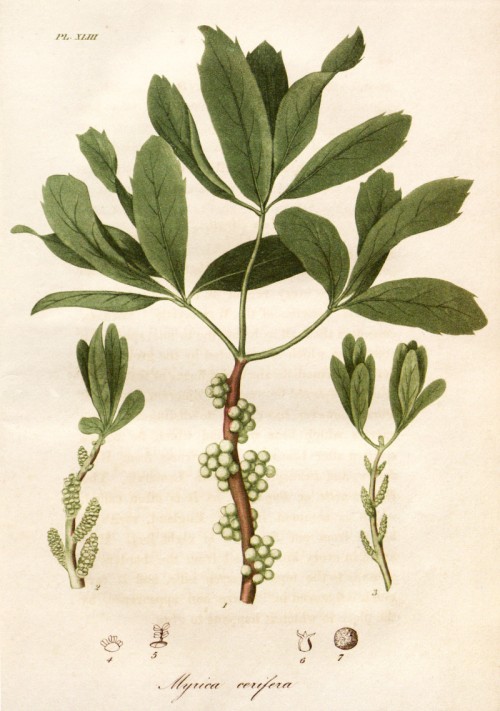Myrica cerifera L. - syn. Morella cerifera (L.) Small - Myricaceae - wax myrtle, bayberry, waxberry, Wachsmyrte, Wachsbeerbaum
Dioecious evergreen shrub or small tree, up to 10m high, native to North and Central America and the Caribbean; leaves oblong, glandular, leathery; male and female flowers borne in catkins; fruit globular with wax-like coating.
„Small tree or large shrub (of southeastern North America). It is adaptable to many habitats, growing naturally in wetlands, near rivers and streams, sand dunes, fields, hillsides, pine barrens, and in both coniferous and mixed-broadleaf forests.“ http://en.wikipedia.org/wiki/Morella_cerifera
„Wax myrtle bark, leaves, and berries were historically used for a variety of medicinal purposes such as decoctions, tinctures and infusions for the treatment of fevers, dysentery, convulsions, colic, palsy and bleeding gums, to name just a few. Another traditional use of the wax myrtle fruit was as a source of wax for bayberry candles.“ http://www.nccoast.org/blog-post.aspx?k=72c3c73e-eabe-42cc-8400-2ef5c273d44a
The wax was a substitute for bees wax and used to make candles and scented bayberry soap in former times.
The root bark (candleberry bark, wax myrtle bark) is mainly used in traditional medicine to treat mucous colitis, but also for diarrhoea, colds, flu, sore throat, heavy menstruation, leucorrhoea (as a douche) and ulcers. „The root bark contains the flavanoid myricitrin, together with tannins and triterpenoids (including myricadiol, taraxerol and taraxerone)… Myricadiol has documented mineralocorticoid activitiy.“
[Medicinal Plants of the World. Ben-Erik Van Wyk and Michael Wink, Pretoria 2004, 209]

Bigelow,J., American medical botany, vol.3 t.43 (1820)
http://plantgenera.org/species.php?id_species=687446